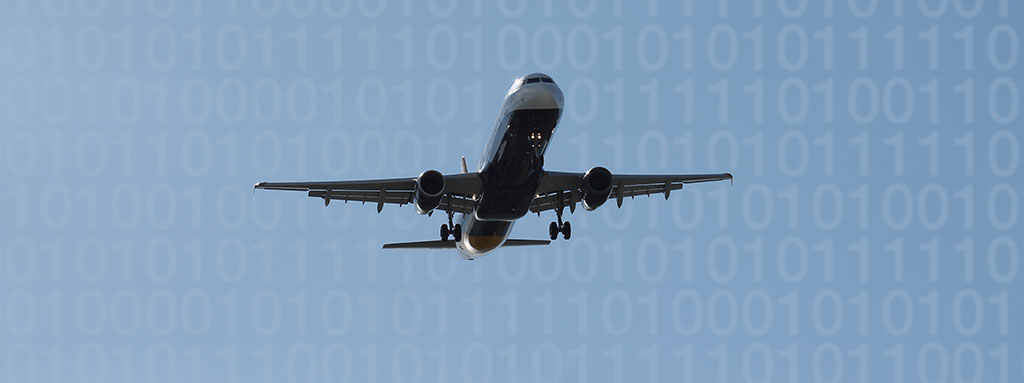How much information can an aircraft generate when it is in flight? Can it all fit into a conventional hard drive? Is it manageable? Is it useful?
Just a few years ago, we were all talking about the hard drives we had in our computers as if they were large places to store data. They were measured in megabytes, a capacity that was difficult to fill up over the course of a computer’s useful life. This was really true at the time, though today we measure hard drives in gigabytes and terabytes.
The ability to gather, store and transmit in real time large volumes of data from a flying aircraft involves a significant improvement in safety.
A great computer, the IBM Deskstar 75GXP, was released in 2000. It was equipped with the largest capacity anywhere in the world at the time (commercially speaking), which amounted to around 75 GB. Yes, that’s right: 75 GB. Some who are reading this article may well ask, only 75 GB of storage? The latest smartphones have 128 GB! Well, I’m sorry to say that data is no longer measured in GB, but rather in TB of information, which is stored and browsed from one site to the next. This, in fact, is the well-known term “Big Data”, which you’ve surely heard or read about in the news, newspapers or Internet portals.
Big Data is a term that refers to the storage of a huge amount of data for subsequent study. It is a term that can be applied to many disciplines, like business or risk analyses, in which a large amount of information from different sources is analysed (we’re dealing here with terabytes or petabytes)1. Some practical examples of Big Data’s applications include analysing consumer tastes, the exact time shops are most crowded with shoppers, the average age of large groups of people or passenger movement vectors in an airport.
The possibility of analysing these huge volumes of information and drawing conclusions from them has led to results such as deducing the ideal musical style to incentivise consumption, the precise time it is convenient to play such style and the average percentage of advertising a consumer is able to bear.
The companies which make an appropriate use of this huge amount of data invoice more, so much so that a new kind of job known as Data Architect has been created.
But now let’s focus on what really interests us here. What does the term “Big Data” have to do with aeronautics? The answer is clear: a lot.
In order to explain this relationship, let’s go back to an unfortunate but revealing event which happened in March 2014 over the Indian Ocean: the disappearance of Malaysian Airlines flight 370. That event sparked off a debate about the effectiveness of current tracking systems due to the difficulty of ascertaining the exact route followed by the aeroplane and where it ended up. The problem resides in the fact that most of the flight data is recorded in the aircraft’s black boxes. However, once these are lost, it would be difficult for us to recover the information. And that is precisely where the concept of Big Data comes into play. It has been calculated that around 500-700 GB of data can be generated over the length of an aircraft’s route. Such data includes the temperature recorded at each sensor distributed all over the aircraft, fuel levels, humidity, altitude, speed, position, images of the cabin, extreme weather conditions and whole lot more. All this data is collected on many flights, but it is not gathered until the aeroplane lands. The data is not online. Nonetheless, it is already a great advance to have it available for use should it be necessary.
To all this we have to add the progressively increasing capability of communications systems. The ability to transmit large volumes of data over long distances is growing at a dizzying pace. It is therefore not preposterous to think that all the volume of data generated by an aeroplane can be collected by ground stations in real time. We would therefore enter into a new dimension, where flight data analysis would become corrective instead of preventive. This would undoubtedly be a significant step forward.
I think Big Data is no longer a term or profession for the future. It is already here in the present. Welcome to the data era.

(1) A terabyte is equivalent to 1012 bytes; a petabyte is equivalent to 1015 bytes


